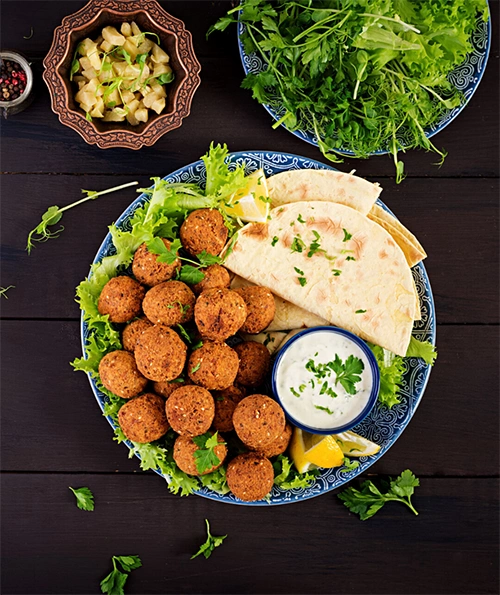

Top Health Benefits of Falafel You Need to Know
Falafel is a nutrient-dense food made primarily from chickpeas, which are an excellent source of plant-based protein, dietary fiber, complex carbohydrates, and essential vitamins such as folate and vitamin B6. Chickpeas also provide key minerals like iron, magnesium, phosphorus, and zinc. The inclusion of fresh herbs like parsley and cilantro boosts its antioxidant properties and adds a dose of vitamin C and K. The fiber content helps with digestion and satiety, making it a satisfying option for those looking to manage their weight or blood sugar levels. Additionally, since falafel is typically made without dairy or animal products, it’s naturally cholesterol-free and supports heart health when prepared with minimal oil. When served with fresh vegetables and whole grains like pita or salad greens, it can form a balanced, complete meal.
Recipe :
For 4 people
Enjoy your crispy, delicious homemade falafel!
When preparing falafel, it is essential to use dried chickpeas that have been soaked overnight instead of canned ones, as this results in the right texture and prevents the mixture from becoming too wet or mushy. After grinding the ingredients, let the falafel mixture rest in the refrigerator for at least 30 minutes to help it firm up, making it easier to shape and fry without falling apart. If frying, use a neutral oil with a high smoke point, and make sure the oil is hot enough (around 175–180°C or 350–360°F) to avoid the falafel absorbing excess oil. Overcrowding the pan can reduce oil temperature and result in soggy falafel. For a healthier alternative, baking or air-frying is a great option with significantly less oil. Also, seasoning the mix with spices like cumin, coriander, garlic, and black pepper is crucial to enhance the authentic Middle Eastern flavor. Always taste and adjust seasoning before cooking the entire batch.

Falafel is highly versatile and fits well into several popular dietary plans. It is ideal for vegan and vegetarian diets as it contains no animal-derived ingredients. When baked or air-fried with minimal oil, it also suits a low-calorie or weight-loss-oriented diet. Since chickpeas are naturally gluten-free, falafel can also be suitable for a gluten-free diet, provided no wheat-based flour or pita is used. It aligns well with the Mediterranean diet due to its plant-based ingredients, high fiber, and use of olive oil or herbs. It also provides a good amount of protein, making it favorable for high-protein plant-based diets. However, falafel is not suitable for ketogenic or paleo diets because of its high carbohydrate content. Additionally, individuals following strict intermittent fasting or fasting diets may need to avoid it during fasting windows. Those on low-sodium or DASH diets should limit salt use and avoid deep frying to keep it heart-healthy. Always consider the preparation method—baked versions are more suitable for health-conscious diets than the traditional deep-fried ones.
albina (May 20, 2025, 7:07 a.m.) : Delicious and inexpensive
karna89gh (May 24, 2025, 1:17 p.m.) : I love how authentic this falafel recipe is—it really captures the classic Middle Eastern flavor.